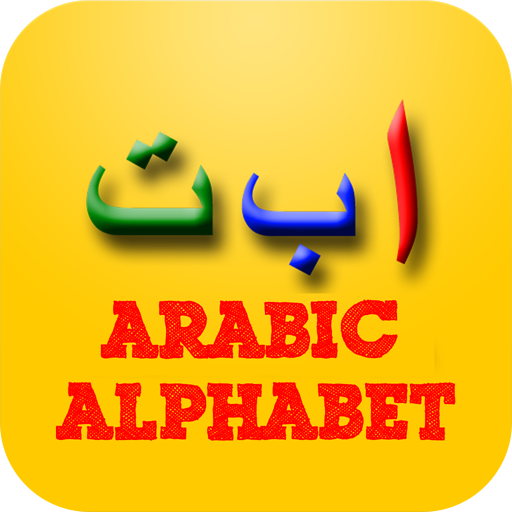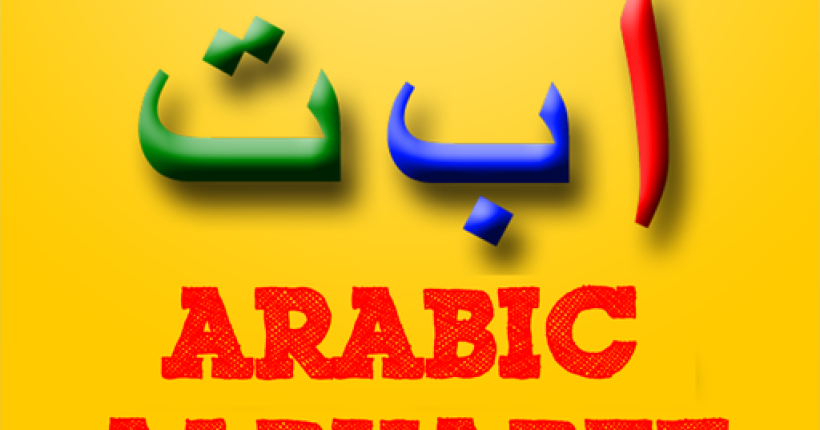Arabic writing for adults online is a skill that must be acquired, it’s an opening to the enrichment of a rich culture, history, and religion shared by more than 20 nations. Arabic handwriting proficiency offers more than satisfaction in language learning; it offers bridges to cultural insight, career opportunities, and even spiritual enrichment for those studying the Qur’an or Islamic texts.
But most adult learners get cold feet. The elegant cursive right-to-left alphabet of Arabic and linked letters appear to be scary at first glance. But provided here is the step-by-step methodology and formal online teaching to access, anyone can learn the Arabic script confidently and clearly.
Understanding the Challenge of Arabic Writing
Mastering writing in Arabic is an exciting challenge of curiosity, persistence, and patience, one well worth the reward. While the aesthetic beauty of Arabic calligraphy might attract students, the structure of the script might be foreign to speakers of English.
Understanding these differences in the outset leads you to develop practical expectations and build confidence as you make your way along.
1. Is Arabic Writing Difficult for English Speakers?
The majority of English speakers find Arabic writing difficult at first, but the issue is not with the intricacy of the letters, rather, the shift of writing logic. The moment you learn the system; it becomes surprisingly logical and systematic.
The Right-to-Left Shift:
One of the earliest accommodations is orientation. Unlike English, the reading and writing of Arabic are done from right to left. This takes a while to get used to, but students easily learn it through tracing and typing.
Cursive by Default
Arabic letters are naturally connected in handwriting and printing (like English cursive) so you will need to learn how each letter connects to the next. There are no capital letters, but every character slightly changes its shape depending on its position within a word.
The Four Forms of Every Letter:
Before you start learning Arabic writing for adults online you need to know that every Arabic letter can be in one of four forms:
Isolated form (when standing alone)
Initial form (beginning of a word)
Medial form (middle)
Final form (end)
For example, the letter ب (ba) has different forms in writing depending on the context it appears in, but it can always be distinguished by its unique dot located beneath the line.
The Vowel Hurdle
Another, and to some learners, the hardest challenge when learning Arabic writing for adults online is that short vowels (called harakaat). They are usually omitted from everyday Arabic writing.
Native readers of Arabic use context for proper pronunciation. For learners this can be frustrating initially, but utilizing fully voweled texts (especially children’s books and beginner lessons) will build comfort and ease until you are ready for unpointed, or pointed, Arabic script.
2. Modern Standard Arabic (MSA) vs. Dialects: Why it is Important in Writing
Part of what you will be studying for Arabic writing for adults online is Modern Standard Arabic (MSA), as it is the official language that is written in books, media, academia, and government documents everywhere Arabic is spoken.
Although regional dialects may differ (e.g. Egyptian Arabic, Levantine Arabic, or Gulf Arabic), MSA is the shared written standard that everyone who speaks Arabic can read.
The skills to write in MSA will set a foundation to read:
Reading newspaper articles, academic texts, and the Qur’an.
Conducting professional business in all the countries where Arabic is spoken.
Switching later on to understanding differences in dialect with ease.
Therefore, while dialects are apt for speaking, MSA is the key to good Arabic writing, brief, structured, and universally accepted.
The Foundational Five: Your Step-by-Step Writing Blueprint
After you’ve grown used to the elegance and rhythm of writing in Arabic, the next thing is to hone your skills with a clear-cut, workable regime. To write Arabic is not so much a question of talent as method and regularity.
The next five foundation steps will take you from clumsy beginner to confident writer of Arabic even if you’re starting from scratch.
1. Step 1: Mastering the 28 Letters (The Huruf al-Hijaa’iyyah)
Your adventure of Arabic writing for adults online starts with the 28 Arabic letters, all with their own shape, sound, and direction of writing.
Arabic letters are written from right to left, and each stroke progresses smoothly into the next. Learning to write in correct stroke order from the start makes your handwriting neat and precise, a time-saving skill when writing longer words and sentences later.
Recommended practice tools:
Computer tracing app like Write It! Arabic help you learn stroke patterns interactively.
Offline practice and visual tracking of progress are made possible through PDF printables (e.g., Tareequl Jannah’s Arabic Writing Pack).
Advice: Practice a couple of letters daily rather than attempting the entire alphabet at once. Repetition builds muscle memory faster than cramming.
2. Step 2: Mastering the Four Forms
Each Arabic letter has different shapes depending on where it’s used in the word, initial, medial, final, or solitary. That’s what gives Arabic that cursive beauty.
How to master this step:
Start with doing pairs of letters that naturally fall together, like بـ (ba) or تـ (ta).
Move on to two and three-letter words like بيت (bayt – “house”) or باب (baab – “door”).
Notice how the letters run on smoothly rather than writing each letter as separate bits.
This stage is when the alphabet turns into written words, your second confidence builder.
3. Step 3: Adding Diacritics (Harakaat) for Clarity
Diacritics, or harakaat, are the small marks above and below letters that indicate short vowels. They’re essential for Arabic writing for adults online and beginners because they lead to correct pronunciation and meaning.
The three fundamental short vowels are:
Fatha ( ـَ ) → “a” as in ba
Kasra ( ـِ ) → “i” as in bi
Damma ( ـُ ) → “u” as in bu
Also:
Sukūn ( ـْ ) is no vowel (silence at the end of a sound)
Shadda ( ـّ ) doubles a consonant for emphasis.
Practice writing and reading fully voweled texts now. As you gain more confidence, you will begin to notice patterns and read unvoweled Arabic more naturally.
4. What Arabic Script Should a Beginner Learn: Naskh or Ruq’ah?
Arabic can be written in various forms, but for a beginner, the best one to learn is Naskh.
Naskh: Clear, rounded, and readable. It’s the script that appears in books, printed documents, and the Qur’an. Most online Arabic writing courses begin with Naskh for readability and uniformity.
Ruq’ah: A cursive, sloping handwriting script that is used for everyday notes and official forms. It’s faster to write but requires higher control, better learned after Naskh mastery.
Start with Naskh to master accuracy, and then proceed to Ruq’ah for speed and attractiveness later.
5. Step 5: Creating a Daily Practice Habit
The secret to Arabic handwriting learning is in daily practice. You don’t need hours, 15 to 20 minutes of writing each day brings amazing changes in the long term.
Here are some helpful techniques to practice:
Copywork: Choose short Arabic texts such as kids’ stories, Qur’anic verses, or daily affirmations and copy them neatly.
Sentence construction: Create your own simple sentences with common words.
Progress monitoring: Keep a special Arabic writing notebook and date each page to see how your handwriting varies from week to week.
The goal isn’t to write fast, it’s to be smooth and accurate. Consistency builds confidence, and confidence builds fluency.
Finding the Best Arabic writing for adults online Classes
Having mastered the foundations of writing Arabic, the next step is to choose the right learning environment in order to remain consistent, motivated, and directed. For adult learners particularly those juggling work, family, or studies, online courses in Arabic writing offer flexibility and structure for actual progress.
1. 1-to-1 Tutoring Platforms
Private Arabic writing for adults online lessons are ideal if you enjoy personal feedback and accountability. Sites like Tareequl Jannah provide you with access to professional Arabic teachers who can review your handwriting, correct letter shapes, and provide you with real-time writing practice. Live tutoring advantages:
Immediate correction of mistakes (e.g., direction of stroke or letter connection).
Customized lesson plans to your level now.
2. Self-Paced Course (Affordable & Flexible)
For self-directed learners, self-study online courses are the ticket. You can enroll in pre-recorded Arabic writing classes on websites like Udemy and learn where and when you want.
Benefits of self-directed learning:
Study at your own pace.
Affordable course options.
Continual access to instructional materials for multiple review.
But if you wish flexibility with professional help, especially one which is designed for beginners, working individuals, and parents, then Tareequl Jannah’s Arabic Courses are the best of both worlds.
3. What are the Best Tools or Apps to Practice Arabic Handwriting?
Support your lessons, in addition to systematic teaching, with technology-based tools that provide daily practice and make it fun and engaging.
Top recommendations:
Write It! Arabic – Demonstrates stroke direction and order in an interactive manner.
Memrise or Anki – Perfect to learn additional Arabic words through writing-based flashcards.
My Qalam Academy – Offers digital calligraphy classes for beginners if you want to discover more about Arabic art and handwriting style.
Combine these apps with your Tareequl Jannah Arabic writing classes to lock in what you’ve learned and set up fluency as well as confidence.
Why Choose Tareequl Jannah’s Arabic Course?
Tareequl Jannah provides online Islamic and Arabic learning designed for non-native students. Our Arabic writing and language courses stand out for the following reasons:
Step-by-step lesson plan from letter writing to writing whole sentences.
Seasoned native instructors providing one-on-one guidance on handwriting, pronunciation, and sentence construction.
Flexible scheduling for students, perfect for adults with busy lives.
Faith-based learning approach, integrating language skills with spiritual growth and Qur’anic education.
Each Arabic writing for adults online course is designed for practical progress, not theory only, so you can write and read Arabic on paper and on screens with confidence.


